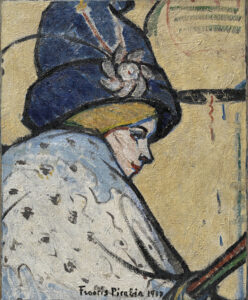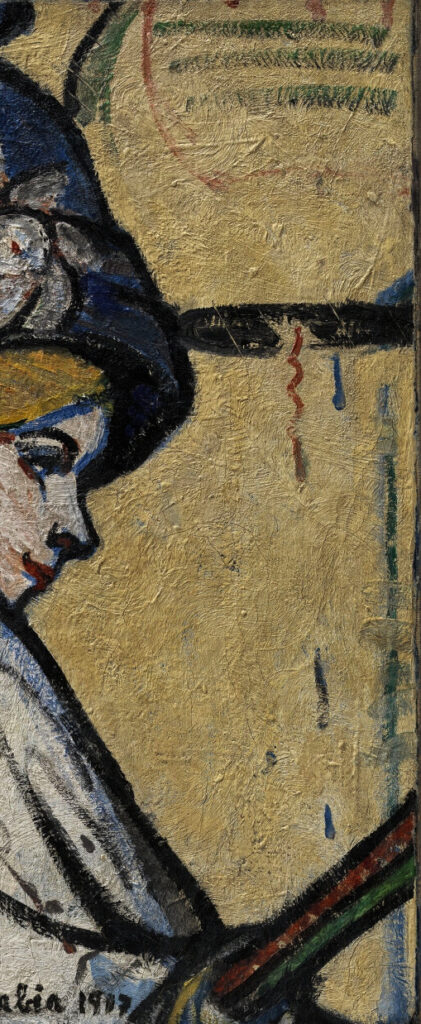Francis Picabia
Jeanne Marie Bourgeois — 1917

A Fresh Look At A Longstanding Mystery
Jeanne Marie Bourgeois (Mistinguett) is probably one of Picabia’s least understood paintings.
For years, scholars have questioned when it was actually created.
One of the main issues is the signature and date, which appear to have been added well after the painting itself was completed.
There’s evidence that paint from the signature seeped into existing cracks—casting doubt not on the authenticity of the signature, which seems genuine, but on the date that accompanies it.
The scholarly solution has largely been to disregard the date altogether and instead assign the painting to 1908–1911, based purely on stylistic grounds.
How Morée Changes Things
As it turns out, the scholars were mostly right. The original painting probably does date from 1908–1911. But when viewed through the lens of Morée, it becomes clear that many of the added motifs reflect the anti-art sentiment emerging in New York, and were likely added in 1917, shortly after Picabia returned to NY in the Spring of that year.
The explanation is simple: this was an existing 1908–1911 painting reworked in the spirit of New York’s early anti-art experiments.
A quiet precursor to Dada.

Is Jeanne Marie Bourgeois Anti-Art?
Several elements in Jeanne Marie Bourgeois simply don’t make sense in the context of 1908–1911.
But by 1917—exactly as the date has always told us—they align closely with the emerging anti-art sensibility in New York—one that Picabia himself was helping to define, alongside Duchamp and others.
We see drips that suggest decay or sabotage. Abrasive cancellation marks slash through a pool of black. Finger-painted swipes interrupt the long drip trailing down the right edge—gestures of defacement rather than completion. The figure remains, but its surroundings are disrupted, and the painting now takes
on a whole new meaning.
These choices aren’t decorative. They are subversive. They simply would not exist in a painting from
1908-1911. They are part of a coded visual system that was taking shape in New York as early as
1915— one that turned erasure, smears, and drips into deliberate acts of sabotage.